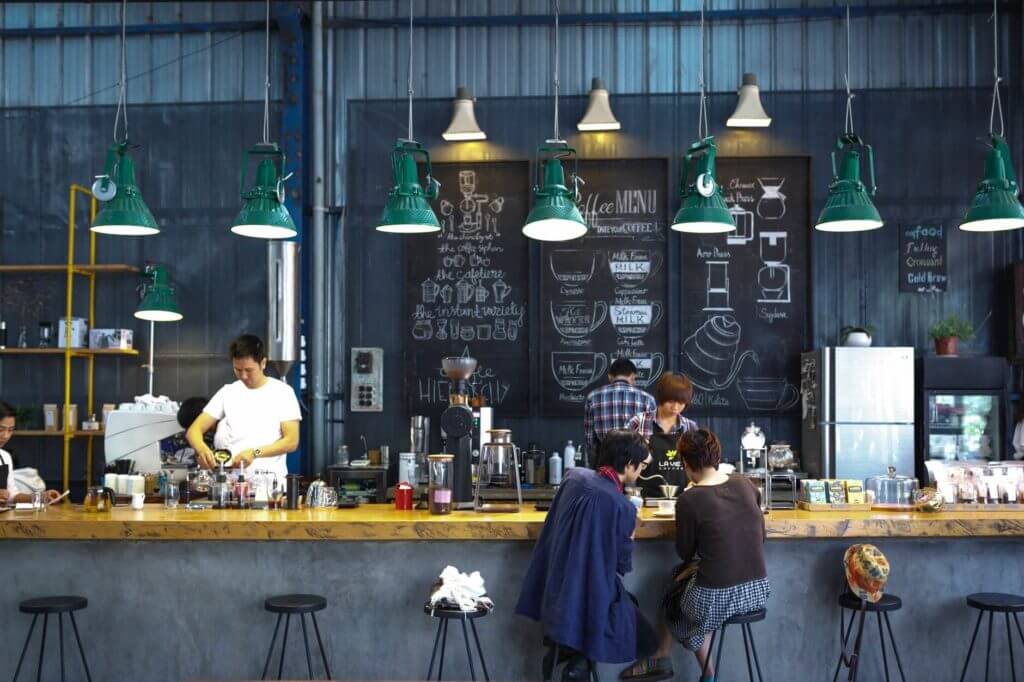
If you’ve come here from our article on why your restaurant needs a website, you’re already informed on why you’re doing any of this- a clear vision of what you could accomplish could keep you from falling behind, or even being too excessive.
With this in mind, it’s also important to understand that what would work for one restaurant may not work for the other.
We’ve put everything you should be thinking about when deciding what goes into your website into 4 categories:
- Theme
- Mobile Optimization
- Navigation
- SEO
- Being Informative
So let’s get into what your website needs!
1. Theme

Your website should be able to embody the essence of your restaurant- giving people a taste of what it’s like to dine with you from the comfort of, well, wherever they are.
Use your design and layout to set the ambience of your physical setting through a screen; from the colours and fonts you use to the style you write in- your content can say a lot about you.
Needless to say, one’s website for a fine dining restaurant should not be mistaken for that of a burger joint, and if such a thing occurs, well, one would be in dire need of a makeover.
For example, the website of a casual setting could use warm colours to emit a relaxed atmosphere, heightened by the use of a conversing tone riddled with colloquialisms- light and friendly.
On the other hand, the website of a high-end restaurant should exude class and elegance. Its content should maintain a formal tone- matched to the elegance of a colour scheme that isn’t a loud red and yellow like some of our favourite fast-food chains, but subtle neutrals that you wouldn’t associate with your Friday night cravings.
Your vibe attracts your tribe, so make sure that your aesthetic will appeal to the people you’re trying to draw in. Tie it all together with consistency, and you’ve got yourself an effective theme.
2. Mobile Optimization

Realistically, not everyone lugs their laptop around with them, and even if they do, it isn’t likely that they’ll pull it out to quickly lookup a restaurant when they could just slip out their phones and do the same thing.
To support this is the fact that we are more likely to own a mobile phone as opposed to a laptop, and are more inclined towards using the convenient, already-in-your-back-pocket option while on the move- which, usually, we are.
Thus, with most of your potential customers being on their mobile devices, catering to their convenience makes sense. Not doing so would just irritate any visitors with the low loading speed and poor performance; basically handing them reasons to leave your site.
Inconvenience is not a good enough reason for someone to reject you- thus, you should invest in a more responsive design that will increase customer satisfaction.
3. Easy Navigation

Think about how people have a tendency to get a little gluttonous at buffets, and eventually end up nauseated with a plate full of more food than they can eat.
The same goes for websites; if you’ve included every feature available on your website just because you can, you’ve overserved.
Navigating through your website should not feel like trying to solve a Japanese puzzle box, as it’s unlikely that your customers will want to go through your winding, convoluted site when they’re already in the car.
Although conventional web design may seem like the oppressor of creative expression, it provides a level of functionality that works well- which is why you’d still be able to navigate through a Russian website far enough to turn the language to English.
Keep your design simple, clear, and convenient.
Give your users multiple options for navigation in the header and footer so they can get to wherever they need to be without having to start all over again each time.
They should not be able to empathize with Ibn Battuta by the time they’ve found your menu.
4. SEO

Having a website would be pointless if people could only find your restaurant through its name alone.
You want to be able to appear as a suggestion as well, and in order to do this, the search engine needs to acquire information from your site relating to the query of the searcher.
Make sure that when creating your content, you align your keywords with your restaurant’s distinguishable features- perhaps through its geographical location or niche, so when people search for things like “Italian places near me” or “Romantic restaurants”, your site pops up.
To aid your SEO further, add your restaurant on other online directories- they’ll lead more people to your site, and make it easier for them to discover you.
You could start out with a Google Business account and then move on to other directories such as TripAdvisor and Zomato.
To delve a little deeper into this topic, check out our article on how SEO works.
5. Being Informative
Apart from the requirements aforementioned, we’ve compiled a list of features that many users would agree are vital to creating the ideal customer experience.
Consider this your check-list, and markdown what improvements your site could be missing out on.
Service Hours

Tell customers your regular opening and closing hours, and let them know the days on which you won’t be available; whether that might be public holidays, religious festivals or even just Mondays.
At the same time, you could also inform customers about your busiest hours so they know the right time to come to you.
Additional information to include here would be a rough estimation of service time so customers can set their expectations for how long they’ll have to wait for their food.
Menu

Maintain a clear, updated menu on your website which includes pricing and tax charges, and avoid attaching it as PDF that requires downloading- instead, have it open in a new tab.
Be informative and open about what goes into your dishes as some customers could have dietary requirements and restrictions, and knowing that they’ll have options to choose from will encourage them to come to you.
As for the pictures included in your menu, make sure that they carry a level of consistency in their photography and angles to create a visual that is pleasant to the eye, but true to what you can provide- no one likes unpleasant surprises.
You’d also want to highlight the availability of liquor, as well as any special items on the menu.
Contact Details

Give users the information they need to get in touch with you.
Provide them with clickable phone numbers, email addresses and locations that take you directly to Google Maps, and you’ve paved the way for them to contact you immediately.
Services

Since your customers are already on your website, you might as well reel them in by giving them the option to make reservations online- make dining with you so simple that they just can’t say no.
Do you also offer catering and delivery? allow your customers to browse through your menu and make orders directly from your site- alternatively, if you partner with other deliver services like UberEats, let them know!
While these features are not necessary for every restaurant, they provide a nice touch that will encourage potential customers to choose you.
Announcements
If your restaurant tends to host several events- perhaps an annual Mother’s day brunch or quiz nights on weekends, then it’s definitely a good idea to include a section, perhaps a banner, for announcements.
Display any special offers or discounts that customers can receive, and prioritize what you’d want your customers to see.
This way, people can find everything they need to know directly from your site, a reliable source, and never miss a date.
Miscellaneous
Tell your visitors that you have parking, Wi-Fi, wheelchair accessibility, and establish what kind of restaurant you are as well as the dress code to be followed.
Some explanations don’t require many words, and, as for everything in this section, all you need is a few well-selected icons.
In this tech-age, a poorly constructed website could be detrimental to your business by compromising the user experience and instilling negative impressions in potential customers.
It is important to not only have a website, but to make sure that it is up to par with the modern standards of design and functionality.
To summarize:
- Your website should reflect your ambience
- Your website should be optimized for mobiles
- Don’t over-complicate things
- Take advantage of SEO
- Tell potential customers what they need to know
And with that, we send you off- you’re finally ready to create your restaurant’s website.
Have any tips you’d like to share with our readers? Leave them in a comment down below!
